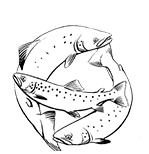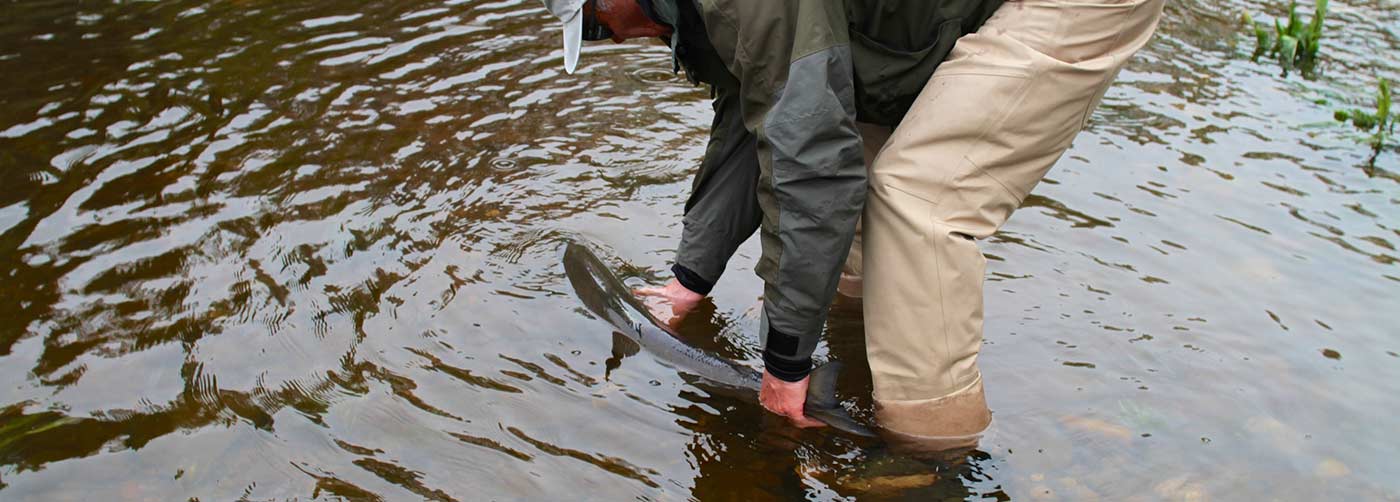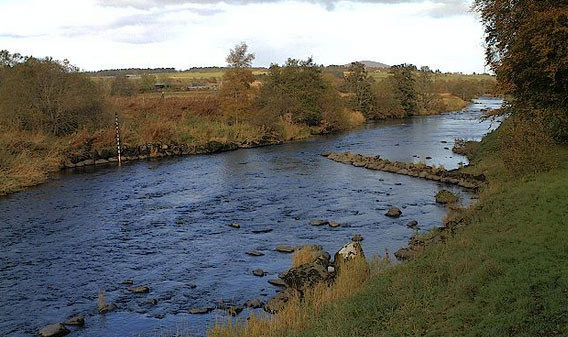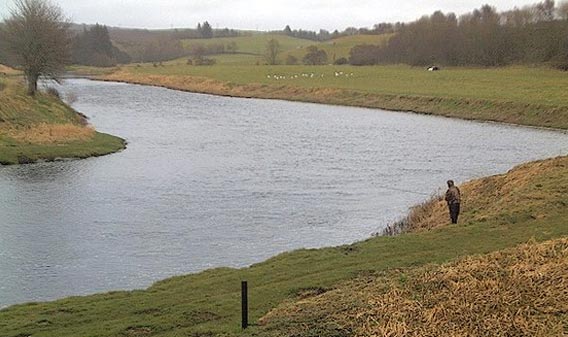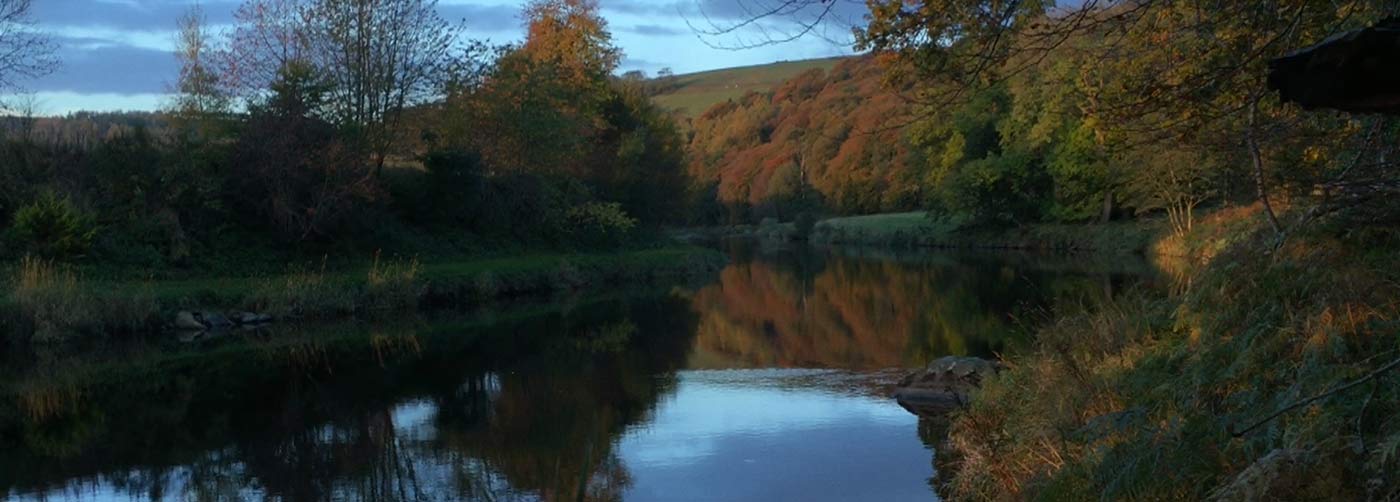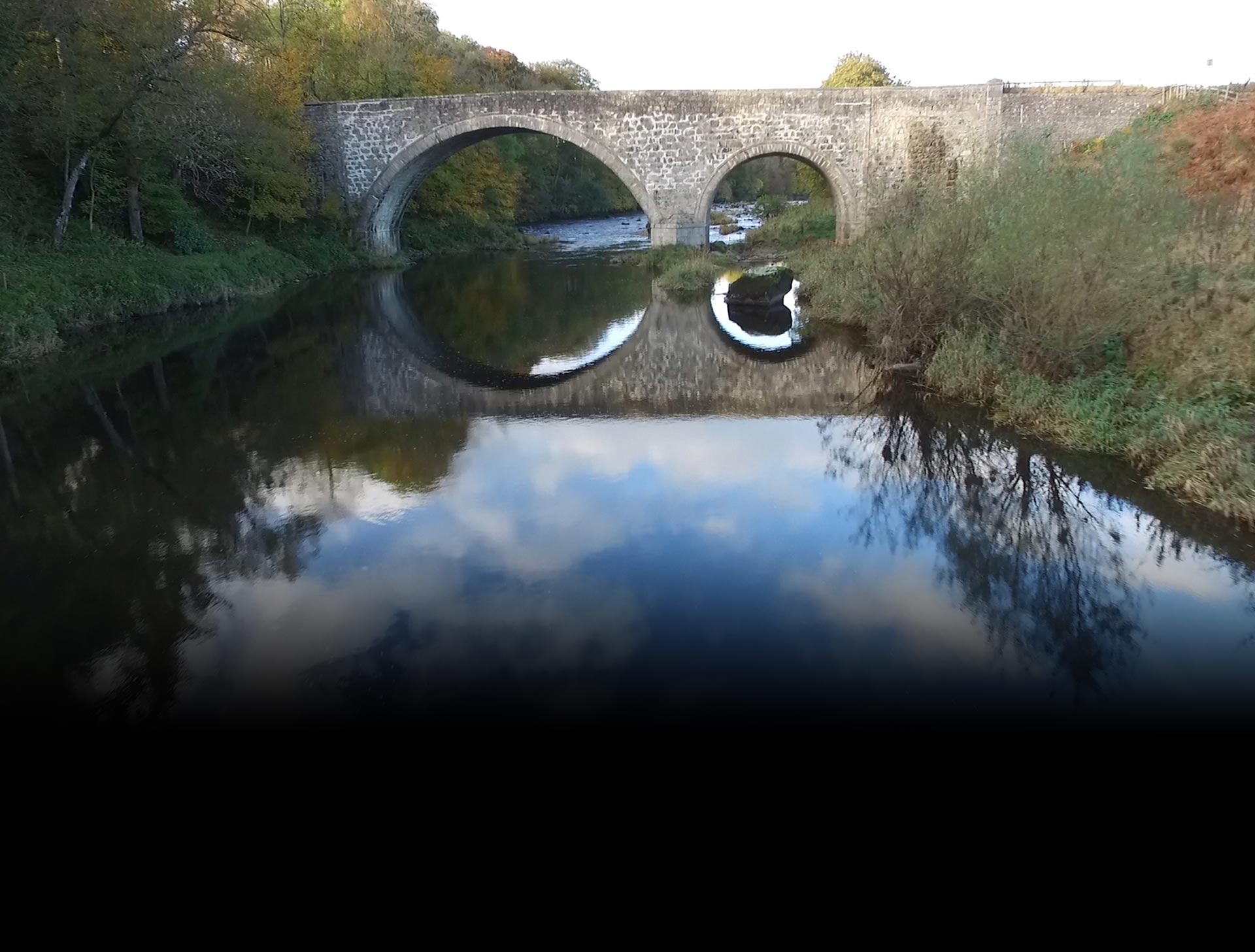Atlantic salmon are anadromous – they live in both fresh water and salt water during their life cycle.The freshwater phase of Atlantic Salmon (salmo salar) varies between 1- 4 years. This juvenile stage depends on the temperature and the availability of food such as aquatic invertebrates (insects).

EGG STAGE:
Eggs are a reddish-orange colour. In fast-flowing streams they’re hidden under the gravel to protect them from predators. This incubation period can last for more than 50 days. Colder water means a longer incubation period. At the end of the incubation period, the egg hatches, producing an alevin.
ALEVIN STAGE:
The first phase is the alevin stage which occurs after hatching from the egg. These alevins have a yolk sac which contains nutrients which sustain them for upto several weeks and even months depending on water temperatures. The young fish remain in the redd (nest) until they have absorbed the yolk sac and have developed the ability to swim when they become fry in search of food and their own territory hiding behind rocks to avoid predators such as trout.
Alevins can’t swim and are extremely vulnerable to predators. At the alevin stage while they are so small and weak, unable to propel themselves through the water they must rely on their ability to hide under the gravel in the streambed to avoid the danger of being seen and eaten. Their only food source is the yolk sac attached to them. This yolk must last for several weeks.
FRY STAGE:
Once the alevin has absorbed its yolk sac, it is called a fry. These tiny fish are only about one inch long. At this point they are able to swim and have to leave the safety of the gravel streambed and forage for food. They will stay in their natal burn for 1-3 years before beginning the journey to the sea.
PARR STAGE:
When the fry grows to 2 inches long, it is called a parr or fingerling. Parr eat voraciously. Because of their small size they continue to be very vulnerable being devoured by any number of predators such as native trout,herons, mink and goosanders.
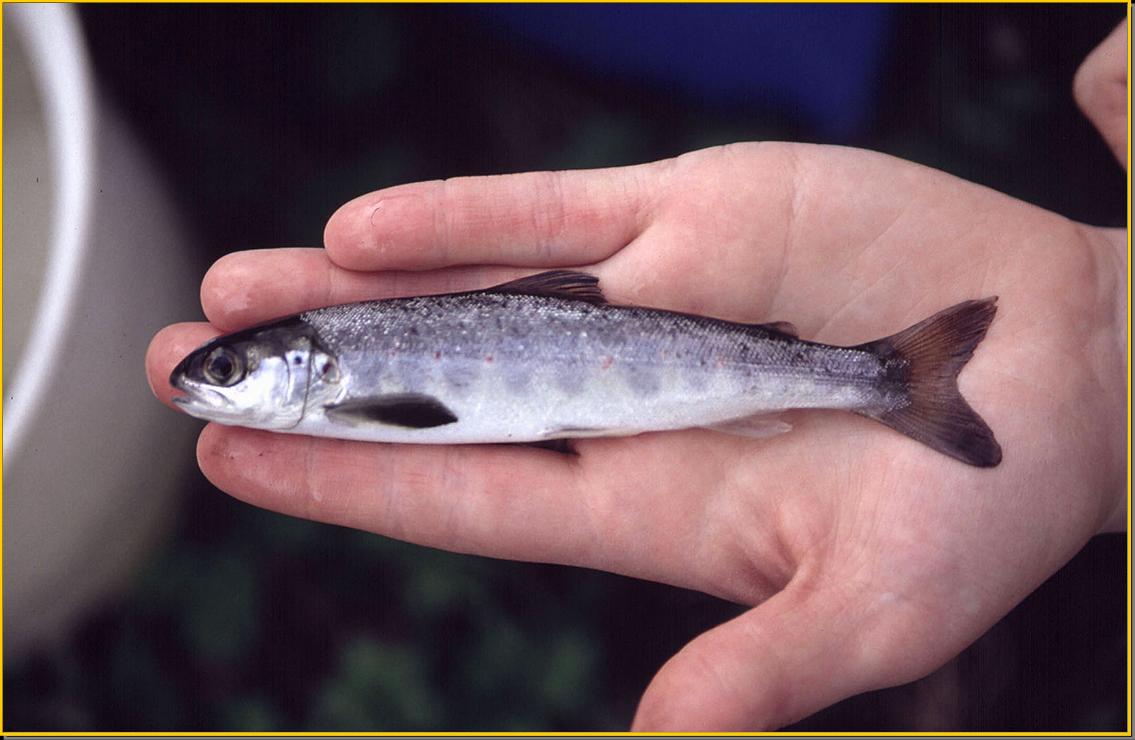
The parr develop distinguishable marking called ‘parr marks’ which act as camourflage to help them avoid predation.
The parr will remain in freshwater for another 2-3 years before undergoing significant changes in order to adapt to their migration to their feeding grounds in the Atlantic. The phase is called ‘smoltification’ and they are called smolts which appear silver to provide camourflage during their marine phase.
The smolt stage is a dramatic moment in the salmon’s life. At this point the fish has migrated to the coastal estuaries and is busily adapting to the physiological changes it must undergo to survive in a saltwater environment. The young salmon during this smolt stage gather in shoals in the lower areas of the river during early summer before setting out to sea where they are again susceptible to predation by seals, fish, birds such as cormorants and man who inadvertently catch them whilst fishing for other species.
Once they reach their feeding grounds off the west of Greenland (‘multi sea-winter’) where they experience rapid growth and remain there for between 2-4 years before returning to their ‘natal’ river where they themselves were born. Whilst some (grilse) will feed around Iceland and return after one year at sea.
The grilse weigh about 2-3 kilograms whilst the larger fish return weighing about 3 -10 kilograms but can reach 20 kilograms or more.
Once they enter their natal river the salmon stop feeding and rely on the body fats built up during their feeding in the Atlantic. This period may be only a few weeks but can be as long as 10 months before finding a mate and spawning,when the female (hen) lays her eggs in an area of gravel/pebbles known as a redd. The male (cock) lays alongside to fertilise the eggs with his ‘milt’. The male has by this stage turned into bright red colours to attract the hens and grown an extension to his lower jaw which is called a ‘kype’ which he uses to fight other males who are vying for the attention of the female.
Many of the males do not survive afterwards but many hens are able to swim back to sea where they known as kelts. They are very thin and are not strong swimmers because they have not eaten for many months. When they reach the sea again they are prone to being eaten by the seals, dolphins and larger fish such as cod so few hen fish return to their river to spawn again. Any fish that do survive this epic journey a second time are known as ‘multi spawners’.






